Etiquette is very simple and just requires common sense.
Here are the essential rules of Italian etiquette when dining out or in a home:
Dress
- Italians like to make a good impression (“la bella figura”) so try to dress nicely. In English, see the British Debrett’s guide for the proper attire for different occasions (there will be slight differences but nothing exceptional). http://www.debretts.com
- Formal restaurants will require men to wear a suit jacket, nice trousers, a button up collared shirt, closed shoes and sometimes a tie. For informal restaurants it is fine to wear jeans or informal trousers and a shirt. Ladies should wear a nice dress or outfit for a formal meal (generally not sparkly, shiny or black lace clothing during the day) and a nice informal outfit for less formal restaurants. Generally, track-suits, other sports clothes and anything pajama like are not worn out to eat.
Entering:
- Arrive on time.
- Ladies are allowed to enter first and the door is held for them. They are assisted with removing their coats and carrying bags.
- During the day (this ends later the further south one goes in Italy), the typical greeting is, “Buon giorno”. In the afternoon and evening the greeting is, “Buona sera.” It is simplest to allow the restaurant staff to greet you first and respond with the same greeting (buon giorno /buona sera).
- Italians often greet friends by “kissing” them on the cheeks while shaking hands. It is typically not a real kiss, but placing your cheek against the other person’s left cheek and then repeating on the other side. Men don’t normally kiss other men and only shake hands. Close friends and family will not shake hands but hug while they “kiss” hello. Always start with placing your left cheek on their left cheek.
- In business dealings, when Italians shake hands, never cross hands when shaking hands as it is considered bad luck. (For example if you and your colleague are standing next to each other facing another pair and shake hands first with the person directly opposite you and then the one diagonal to you- you and your colleague let one go first before the next one then shakes hands.)
- In the evening, guests are offered an aperitivo to drink, often accompanied by small snacks.
Service
- Excellent service is considered an art form in Europe and many people make their careers as servers. Many servers take great pride in their career and are highly respected. In informal restaurants in Italy, many are family operated so the servers will be part of the family that own the restaurant. Servers are to be treated with respect at all times. It never pays to be rude to the proprietor’s daughter.
- Ladies are served first.
- Generally speaking, if you are kind and ask nicely, the servers will help you to order.
- Do not yell to the waiter, stand up, wave wildly or get up and go get the waiter. Simply raising your hand slightly should be enough indication.
- Dishes are served from the left and dirty dishes are removed from the right.
Fellow diners
- Be aware that other diners are there to enjoy their meal and the company of their guests so be respectful by not doing anything that would interrupt their meal (talking loudly, posing for pictures for lengthy periods of time around the restaurant, talk on the phone, spit, have arguments, smoke, pick your teeth in public, let children roam free, etc.)
Ordering
- When ready to order, close the menu as an indication to the waiter.
- Generally everyone orders their own meal.
- Ladies are allowed to order first.
- See this guide here on how to order food.
- See this guide here on how to order wine.
Table setting
- Simple table decorations are considered more elegant and stylish.
- The more formal the meal or restaurant, the nicer the tablecloth. The most formal is typically a white linen tablecloth with matching napkins which have been perfectly ironed. A very informal meal may have a paper table covering or placemats and paper napkins.
- Each place setting should have at least 50 cm of space. There should not be too much space between guests so that they cannot easily converse.
- At formal meals sometimes a metal or porcelain charger is used as a place saver only and food is never placed on them.
- Bread plates are to the left of you, often with a small knife for butter.
- Napkins can be placed either to the left, right or on the plate if space is tight.
- Start with the utensils placed furthest away from the plate and work your way inwards. The waiter will change the utensils based on what you ordered. The specific table settings are illustrated below.
- Other items which may be on the table include a flower vase, salt and pepper shakers, a butter dish, cruet, a bowl for Parmigiano-Reggiano cheese, a pepper mill, a bucket for cooling wine and finger bowls for washing but only if there is enough space on the table and they do not restrict the view of the guests or otherwise impair their enjoyment in any way. Flowers and candles should not give off scents which detract from the food.
Simple Informal or Lunch Table Setting
Simple meal at home or at an informal restaurant. Typical for lunch (which may be called breakfast in a formal invitation) to include a first course, one main course, salad or cooked vegetables, one wine, and cheese or a simple dessert.:
1. Glass
2. Plate
3. Fork
4. Knife
Formal Lunch or Normal Dinner Place Setting
Dinner with starter and soup. Typical for a normal dinner (in a formal invitation this may be called lunch). This may include: bread, a first course of soup, a main course, white wine, red wine, and dessert.:
1. Water glass
2. Red glass
3. White wine glass
4. Bread plate
5. Plate or charger
6. Small fork
7. Large fork
8. Large knife
9. Soup spoon (may sometimes be a small fork if there is a starter instead of soup)
10. Small knife
11. Dessert knife
12. Dessert fork
Formal Place Setting
Meal with starter, soup, fish and meat. This is a more formal dinner (may be called lunch in formal invitations). This may include bread, starter, soup, fish, meat, white wine, red wine, sparkling wine or dessert wine and dessert:
- Water glass
- Red glass
- White wine glass
- Sparking wine glass
- Sweet wine glass
- Bread plate
- Dinner plate or charger
- Large fork
- Fish fork
- Small fork
- Large knife
- Fish knife
- Big spoon
- Small knife
- Dessert fork
- Dessert knife
Cutlery
- Pretty much all food is eaten with utensils, not with your hands. There are some exceptions to this such as asparagus (on informal occasions only and should be pinched at the tip), bread and fruit.
- Knives will be placed to the right of the plate with the blade facing the plate (except for butter knives which may be on the bread plate and dessert knives which are above the plate). There is usually a maximum of two knives to the right of the plate for meat and fish.
- Spoons and forks will always be placed facing upwards. Forks are always to the left of the plate (except for oyster forks which are to the right of the plate and dessert forks).
- Dessert forks, knives and spoons are placed above the plate with the fork tines closest to the plate and the tines facing right. Dessert spoons or knives are placed on the outside with the spoon or knife facing left.
- Fruit is served after dessert. Fruit cutlery will be brought with a finger bowl and fruit plate and arranged with the fork to the left of the plate and the knife to the right.
- The fork is used for holding the food in place while cutting with the knife. The knife is NEVER brought to the mouth.
- Only cut one mouthful at a time rather than cutting up all the food in advance.
- Holding the fork and knife: hold the knife in the right hand and never let your fingers touch the blade. Hold the fork in your left hand and when using it to grab food, the tines should be facing downwards towards the plate.
- Bones are to be cut out with the fork and knife before the food is brought to your mouth.
- It is not acceptable to hold food on the fork and bite from it. Only bite-sized pieces of food are placed on the fork and placed in the mouth.
- Knives are typically not used for soft foods such as eggs or soft vegetables.
- When you are finished with a course, place the used utensils parallel to each other on the plate in the 6 o’clock position, perpendicular to the diner.
- While you are eating, if you want to put down the utensils, place them on the edge of the plate.
- There are also specialized utensils for foods such as shellfish , snails , shellfish and some vegetables.
Bread
- Bread can be placed on a side plate to your left. It is most polite, if using butter, to place a bit on your plate. When you want to eat the bread, break off a mouth-sized piece with your hands, take a small a mount of the butter on your plate with the accompanying knife and smear a bit on the bread and place the whole thing in your mouth.
- It is not polite to bite from a larger piece of bread.
- It is impolite to crumble the bread or break off many pieces at one time.
Soup
- When eating soup, you draw the soup across the bowl towards you, then lightly brush the bottom of the spoon on the farthest side of the bowl to remove any drips and then silently put the spoon in your mouth. No slurping.
- To retrieve any remaining liquid on the bottom of the bowl, tilt the bowl away from you, towards the centre of the table and use the spoon to scoop it up.
Napkin
- Napkins are placed in your lap at the beginning of the meal before you have eaten anything.
- No using the napkin for anything other than wiping your mouth or hands.
- It is fine to not use the napkin after the main course is finished if you prefer not to.
- If you get up to leave the table place the napkin to the left of the plate, unfolded.
- Never wipe anything on the tablecloth. It is meant to remain immaculately clean throughout the meal.
Glassware
- Glasses are placed upwards above the knife to the right of the plate.
- At home, water will be poured before guests are seated.
- Glasses are placed in the order in which the wines were meant to be enjoyed. The water glass is placed closest to the plate with the white wine glass next and the red wine glass the furthest. Additional glasses for sparkling wine and/or sweet wine may also be added. Typically there are a maximum of 4 glasses per person at one time.
- Types: A tall, thin glass is used for sparkling wine, the largest stemmed glass will be for red wine, the next largest stemmed glass will be for white wine, and the water glass can be stemmed or not. Dessert wines are served in quite small, shorter stemmed glasses.
- Glasses should be held with the all the fingers with none sticking out. Sparkling and white wines are best held by the glasses’ stems so as not to heat the wine with your hand.
- Slurping from the glasses is unacceptable (except for wine when at wine tastings).
- Coffee at home is served in the sitting room. Liqueurs are also served in the sitting room after coffee.
Sitting
- At formal dinners there may be individual placeholders or a map with everyone’s names written stating where they are to sit.
- The place of honour is often the hostess’s. The place of honour changes with location and may be determined by a beautiful view, etc.
- The hosts are seated facing each other.
- The most important or eldest guest is seated to the right of the hostess with the next most important or oldest guest seated to the left of the hostess. The third most important or eldest guest is seated to the right of the host and the fourth most important or oldest guest to the left of the host.
- If the most important guests are a couple then the husband sits to the right of the hostess and the wife to the right of the host.
- If the guests are the parents of the hosts, then the mother-in-law sits to the right of the host and his mother to his left while the father-in-law sits to the right of the hostess and her father to her left.
- If all the guests are the same age and importance then the guests which are the least close friends of the hosts should take up this order.
- Guests are often seated alternating between men and women.
- If there is a rectangular table and 8 diners then the hostess sits in the place of honour with the wife of the most important couple across from her. To the right of the hostess is the husband of the most important couple. The host sits to the right of the wife of the most important couple.
- If there is a rectangular table and 2 couples then the male guest sits to the right of the hostess and across the table sits the host with the female guest to his right.
- If a single person is invited, depending on their gender, they sit to the right of the host/hostess of the opposite gender.
- When eating, keep your elbows next to your body not pointed out. Keep your poise as much as possible and do not hunch over the plate.
- Diners should sit properly at the table with their back upright in the chair. Their feet should not be on the chairs and no slouching.
- Never place your elbows on the table (although some allow this during dessert).
Eating
- Do not begin to eat until everyone is served.
- Eating should be without sound, no slurping or sucking sounds and no sounds from the fork and knife on the plate. I know this is often unconscious but try to be aware.
- No eating with your mouth open. No talking while chewing. The mouth should always be closed while chewing.
- Never drink with food in your mouth.
- No spitting or blowing your nose without a tissue. If you need to spit or blow your nose, then go to the bathroom and discreetly and silently use a tissue and discard.
- The only exception to spitting is when eating unpitted olives or cherries. In this case, the olive or cherry can be discreetly spit into your cupped hand and placed on the plate.
- No picking your teeth at the table, even if you cover your mouth. This can be done discreetly in the bathroom.
- No reaching across other diners for food or across the table. Never stand up to reach for anything. Politely request another diner to pass something to you if necessary.
- Do not smear food on a plate to cool it.
- Do not make loud noises blowing on food to cool it.
- At formal meals, do not use the bread to soak up liquids on the plate or scoop food.
- If you need to get up from the table during the meal, apologise.
- Cheese is normally only served at lunch. It is not eaten with a fork (except for ricotta, mascarpone, etc) but only cut with a knife and eaten with bread.
- When offered fruit, take the piece of fruit closest to you. It should have already been washed. At formal meals, only forks and knives can be used to prepare fruit.
Sharing
- At very formal restaurants it is best not to share. At informal restaurants, it is best not to share plates but passing a forkful of food to someone else to try is fine. Children, however, can do pretty much as they please so long as they are well-mannered (sit in their chair and do not cry or scream).
- If dishes are served communally, think of others before serving yourself ensuring that there is enough left for everyone.
- Dishes are passed from left to right.
Bathroom
- Close and lock the door to your stall behind you so as to spare yourself and others embarrassment and confusion.
- Do not stand on the toilet.
- Throw the tissue (and only the tissue) into the toilet. All plumbing systems in Europe can handle it.
- Try to leave the bathroom clean.
- At high end restaurants and hotels, there may be an attendant in the bathroom. They may expect a small tip of EUR 1.
Conversation
- Diners should not try to flaunt their knowledge or possessions ever.
- Make everyone sitting at the table feel at ease and be careful not to exclude anyone. Try to keep the conversation flowing.
- At the commencement of informal meals, fellow diners may wish you good appetite by saying “buon appetito” which you respond in kind. At formal dinners, this is not said.
Appreciation
- If you are not paying for a meal, never ask how much the bill was, to see it or refer to it at all. Simply thank your host.
- If the meal was at someone’s home, it is nice to send them a handwritten note posted within a few days of the meal.
- If the meal is at someone’s home, it is nice to bring a bottle of wine, chocolates or flowers for the hosts to enjoy. Even more polite is to send flowers a day or two after the meal when the hostess is less busy.
- If the meal was at a restaurant, typical service would be 2 to 3 euros. 5 euros would be a nice tip. 10% would be a very good tip. In very touristy locations, 10% may be expected.
- When at a restaurant, it is polite to say thank you (“Grazie”) and goodbye (“Arrivederci”) to the restaurant staff.
For more in-depth knowledge into the world of etiquette, Debrett’s is an excellent British guide in English and offers classes. Knowledge of British manners should be sufficient in Italy.
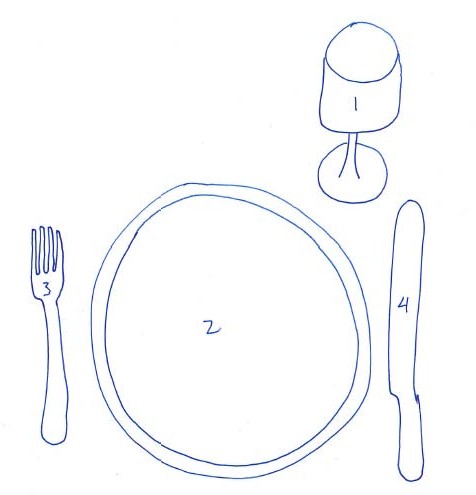
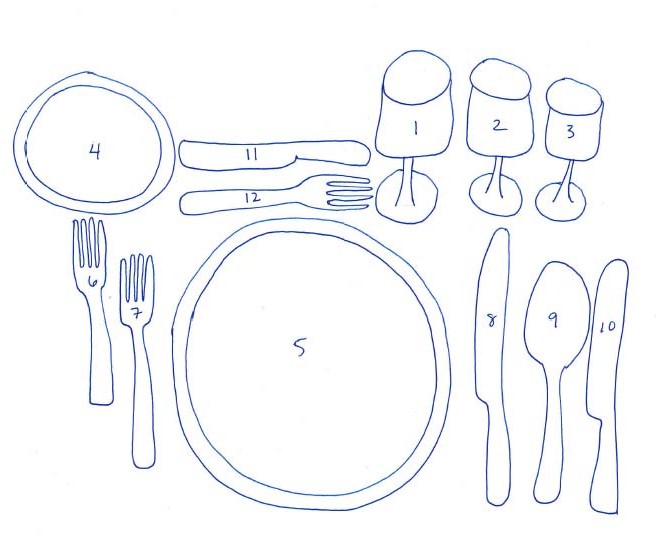
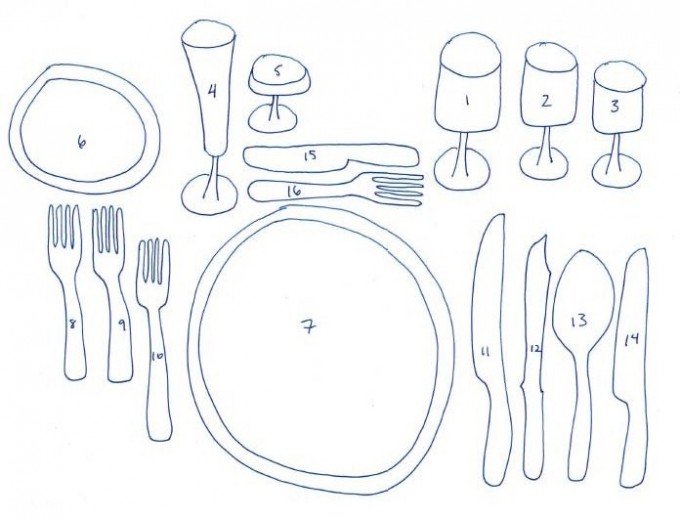

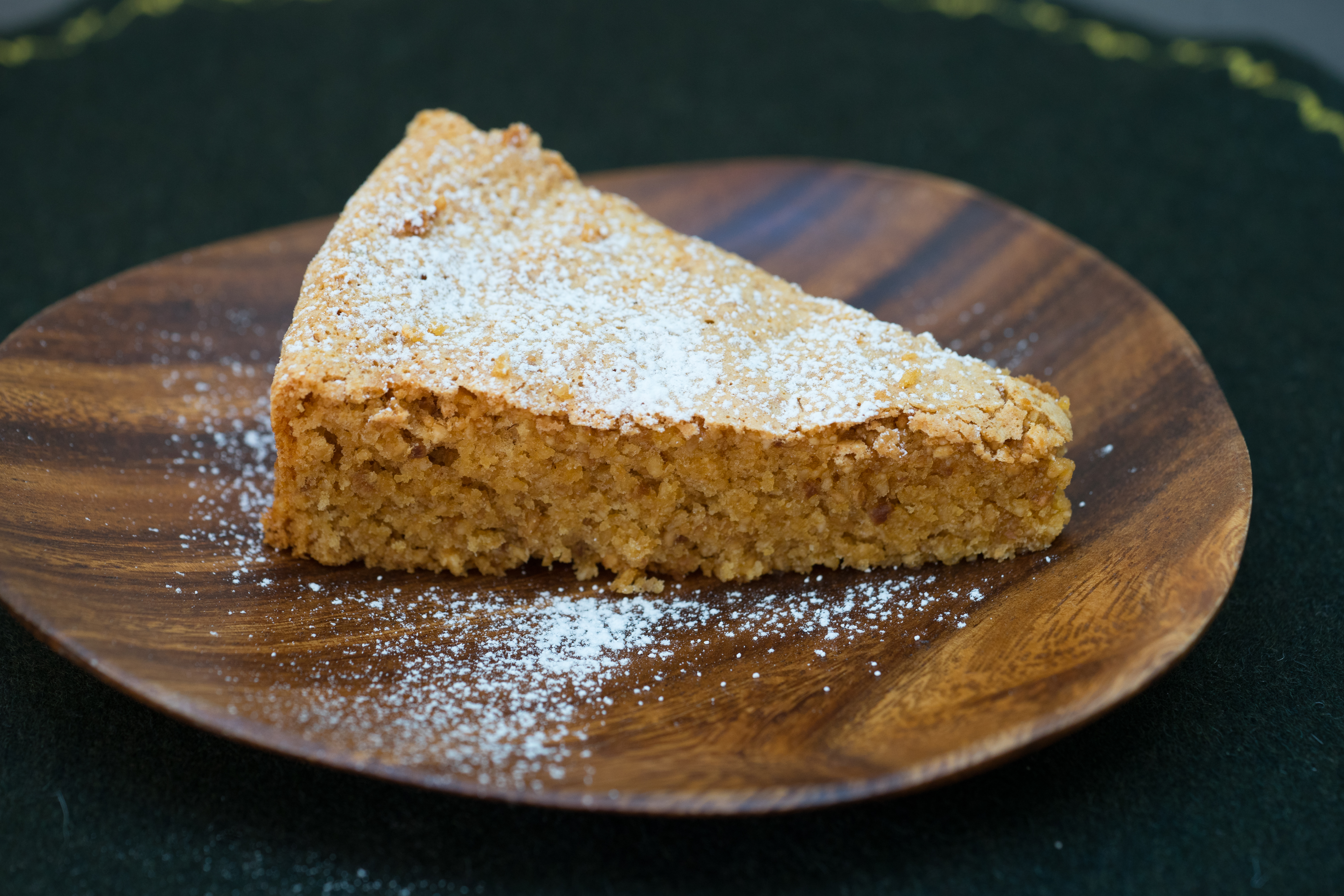
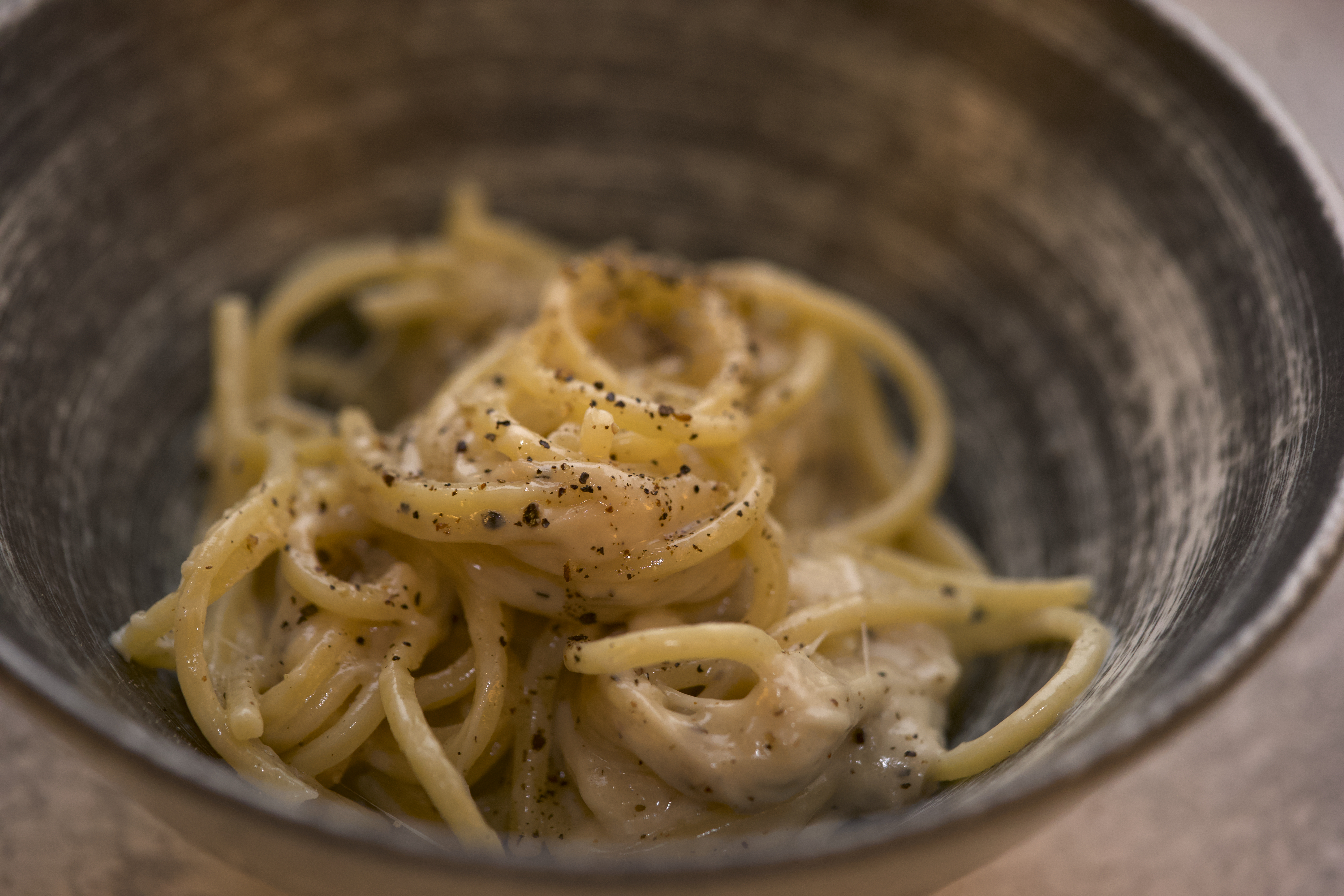
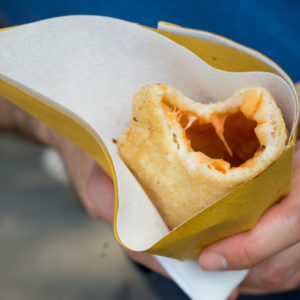
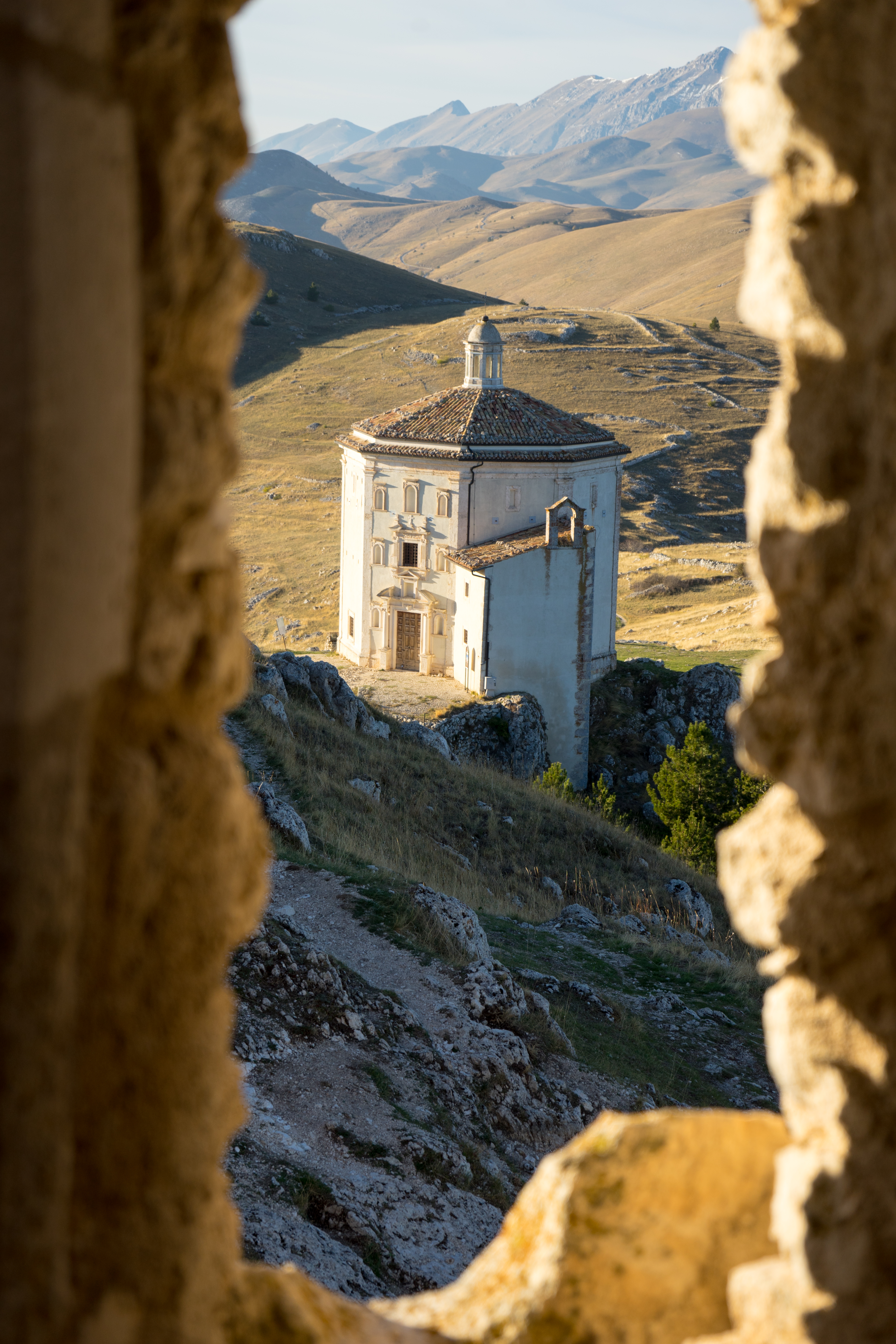
Leave a Reply